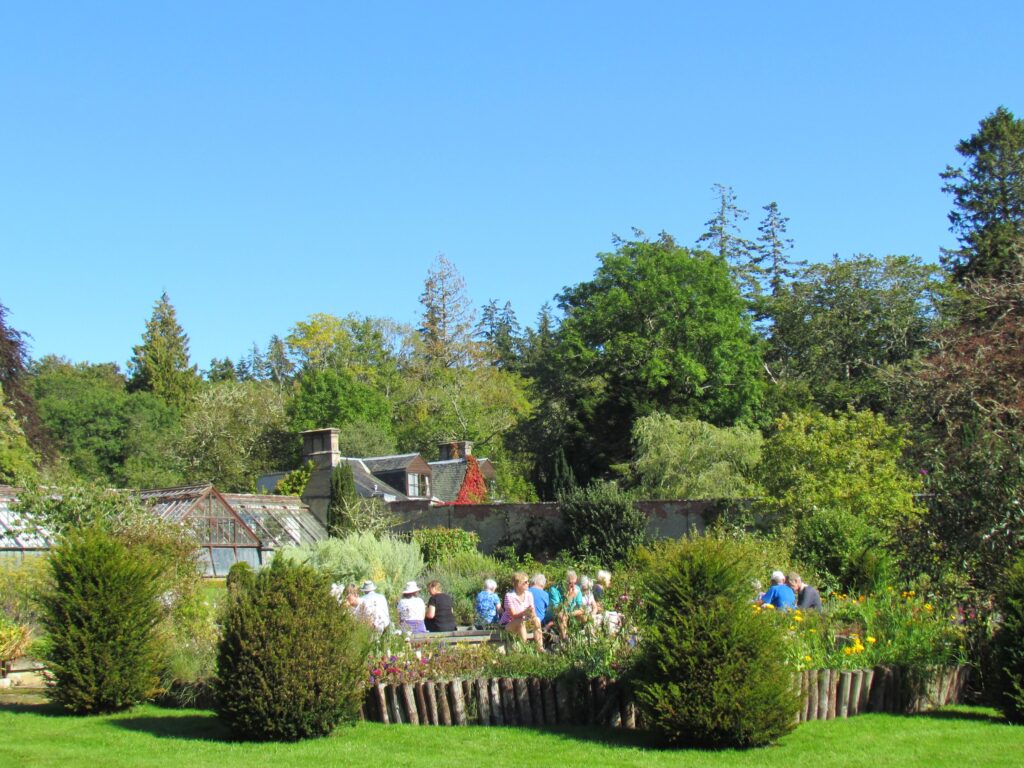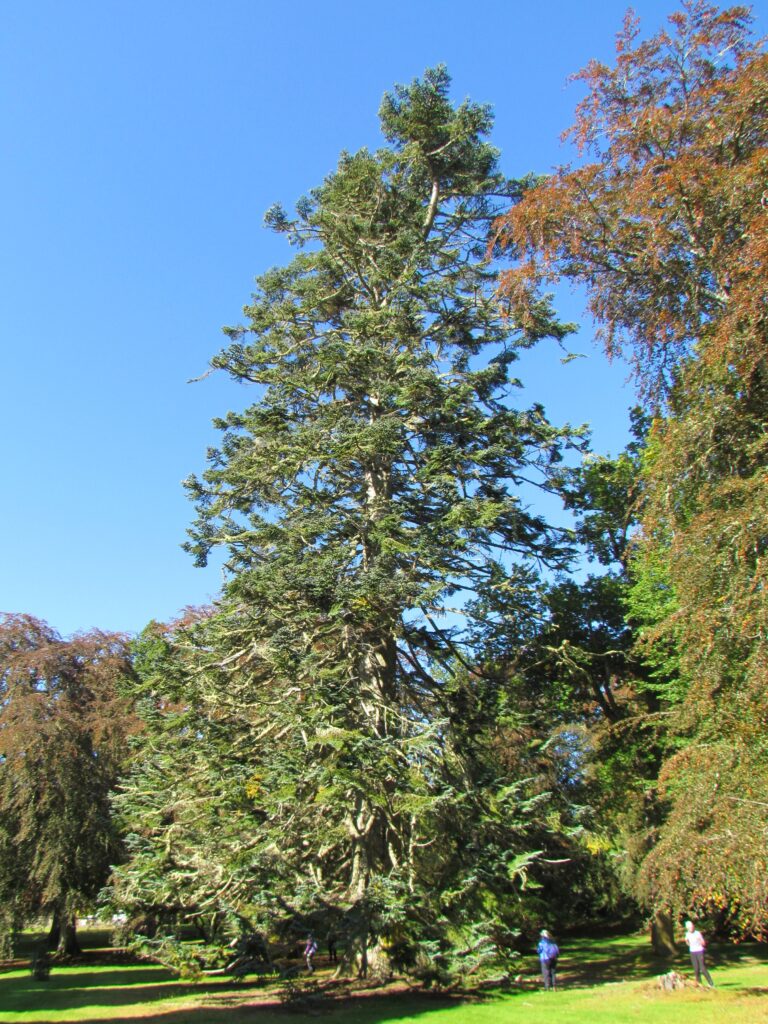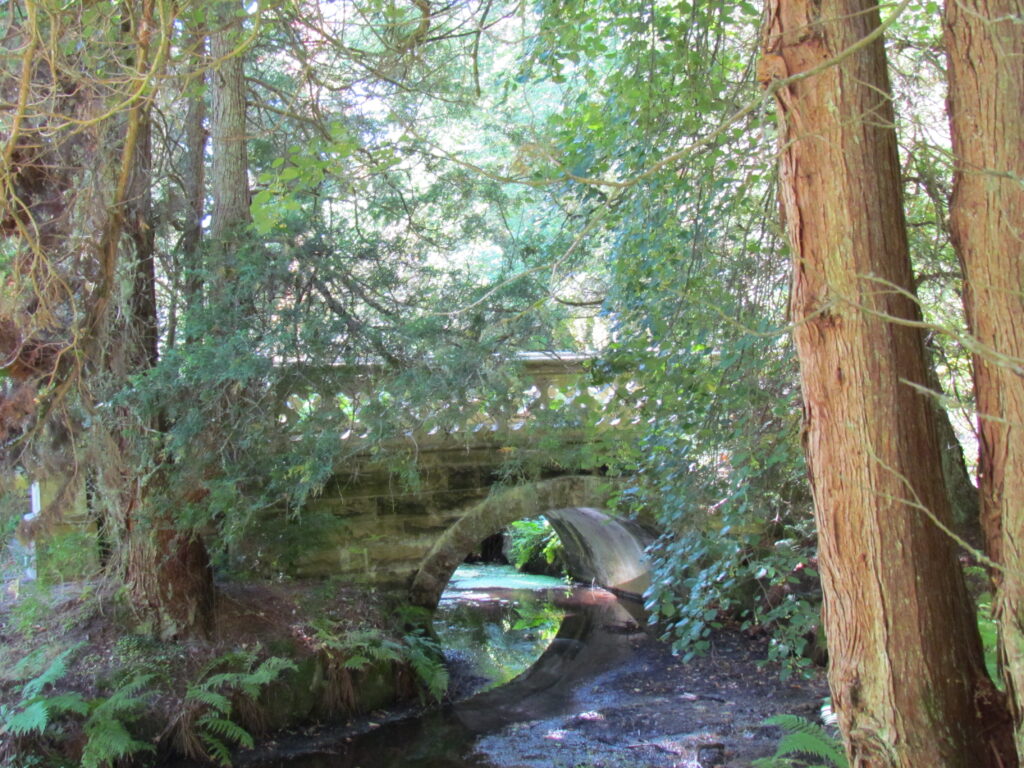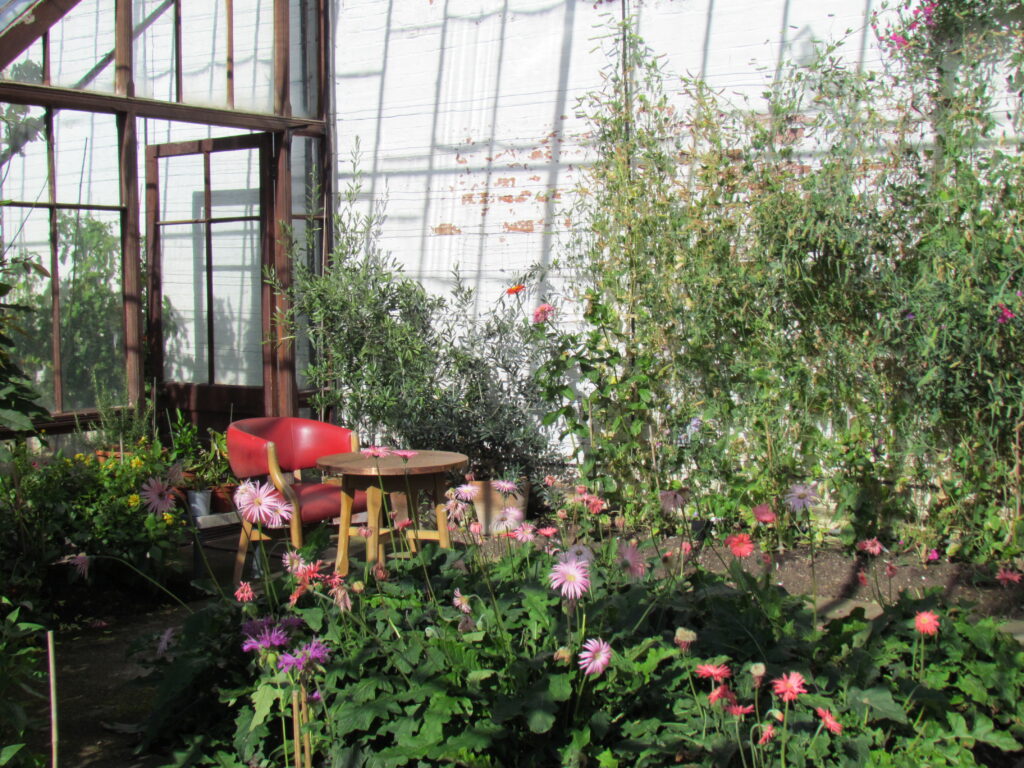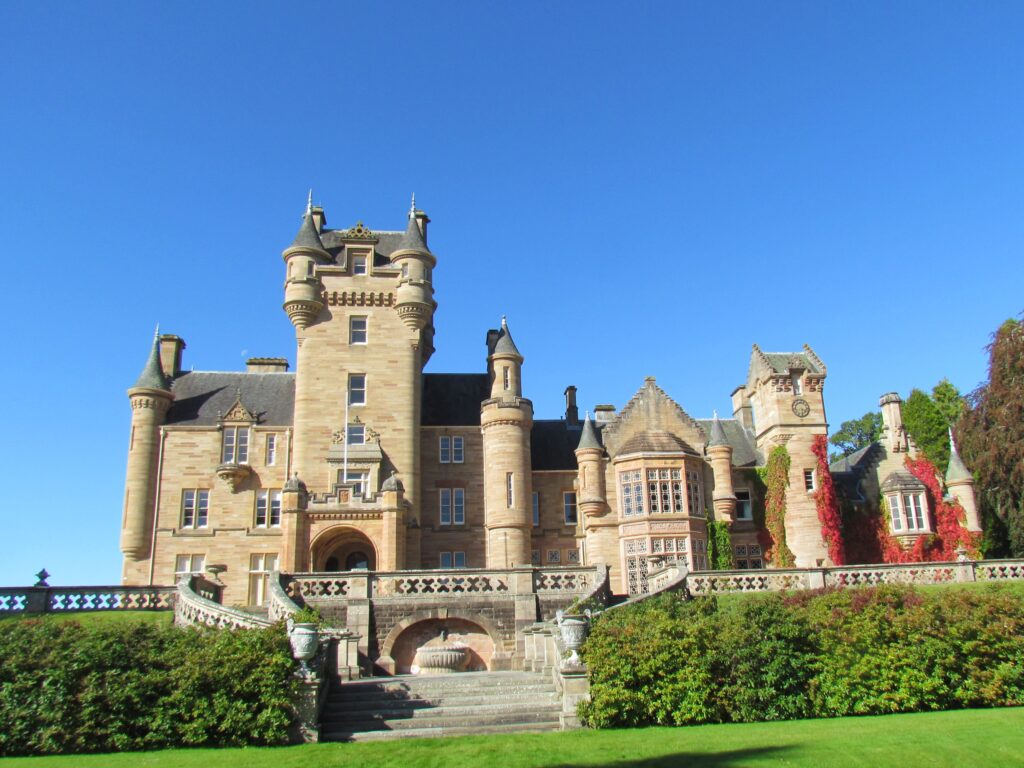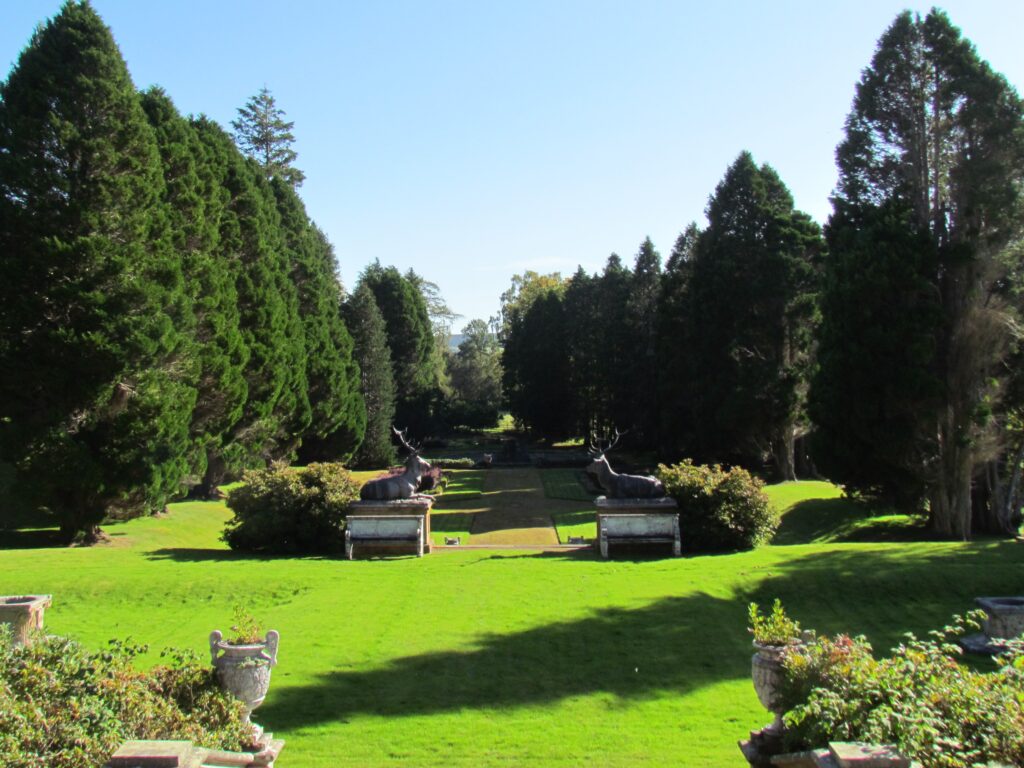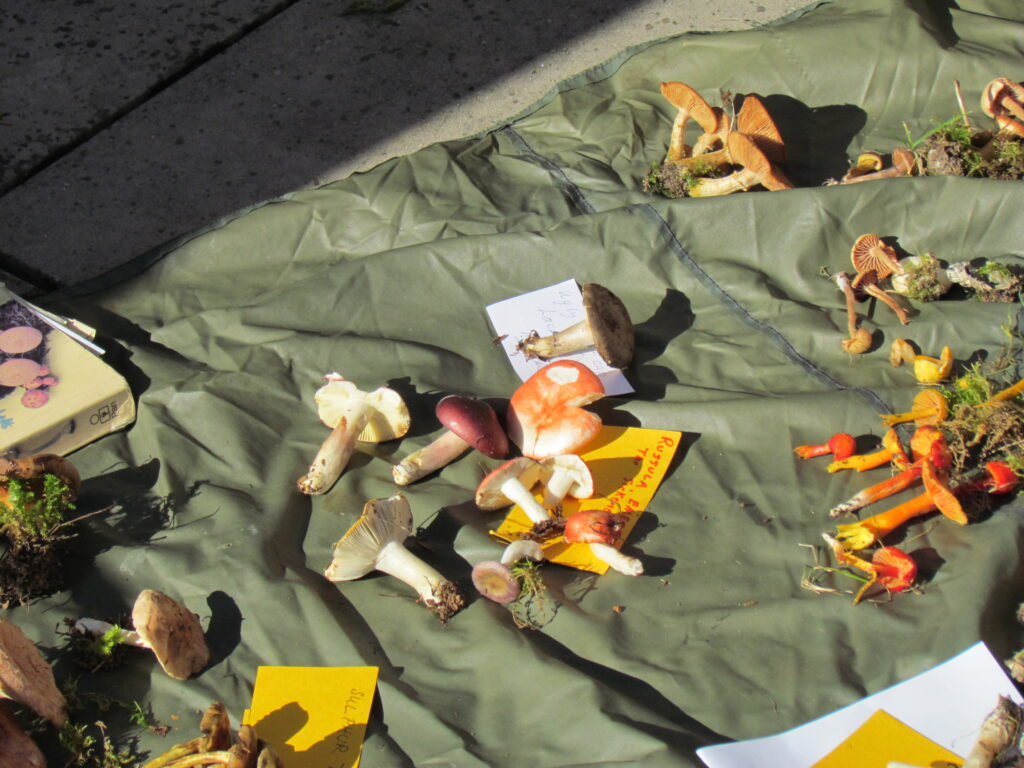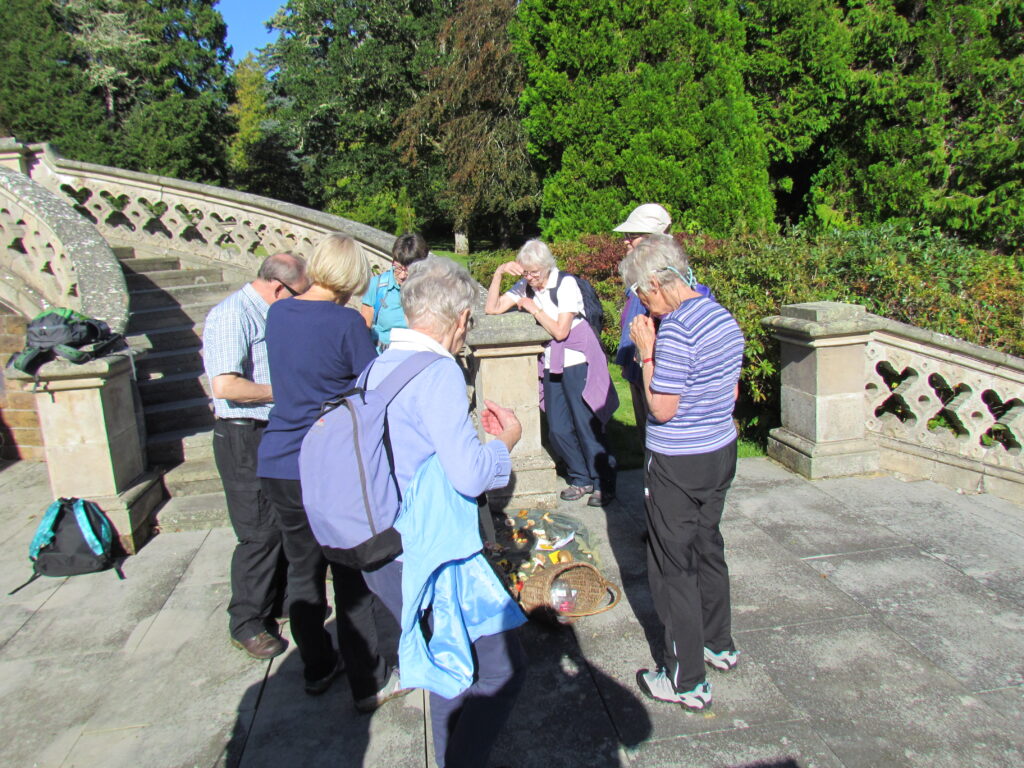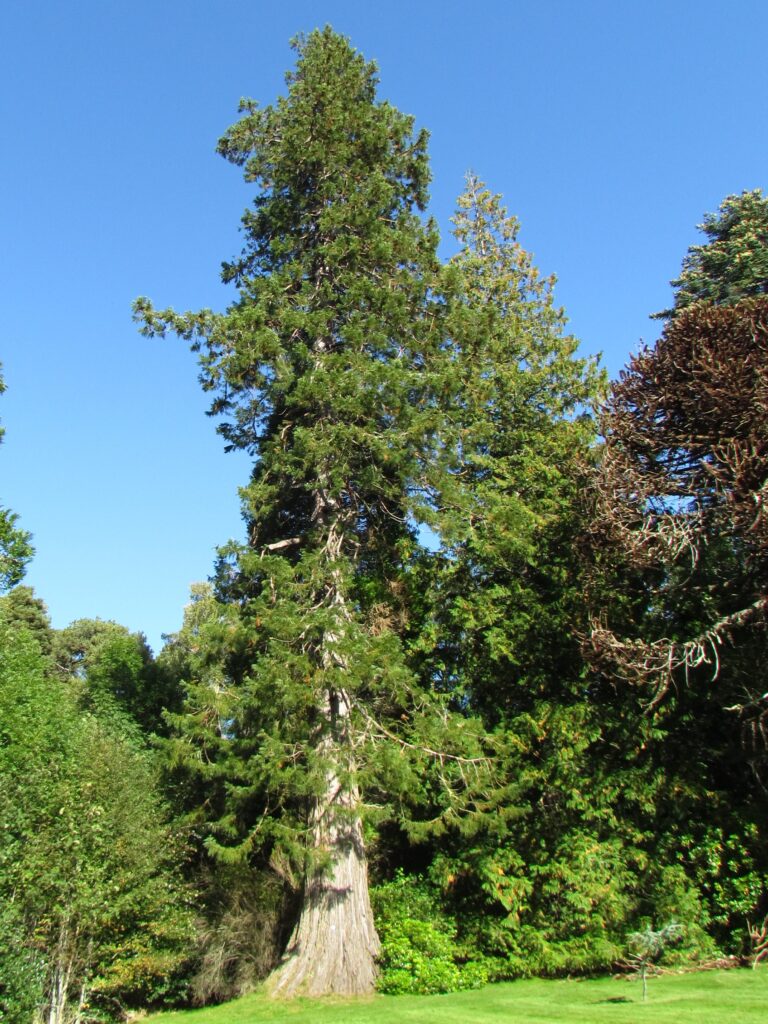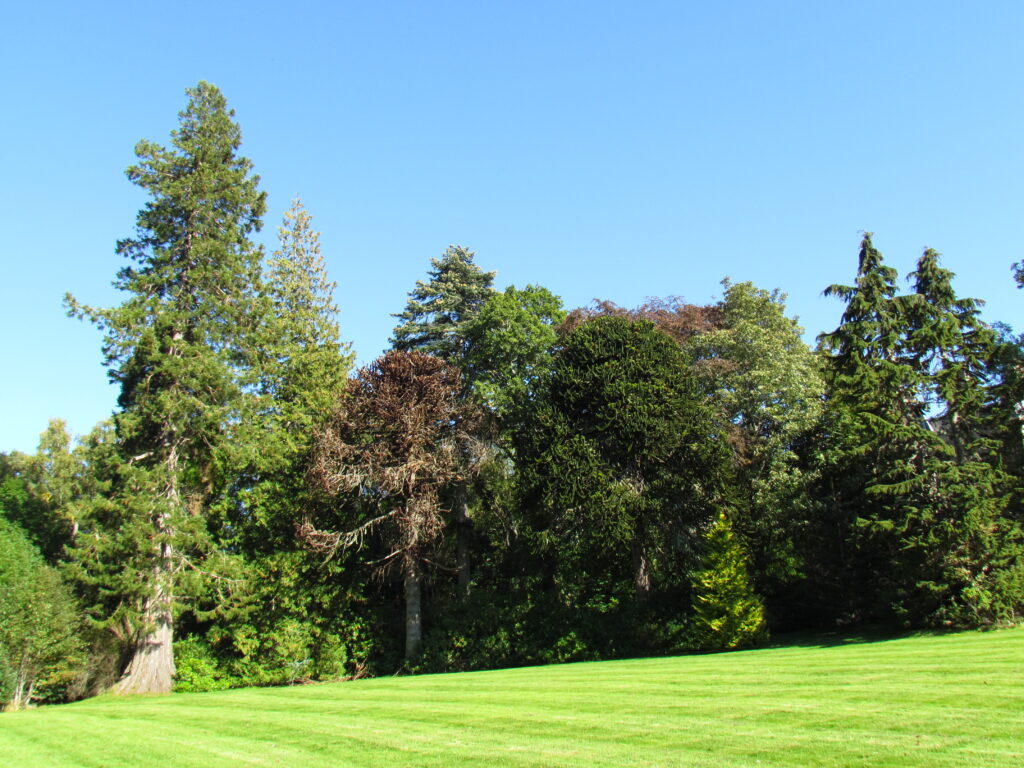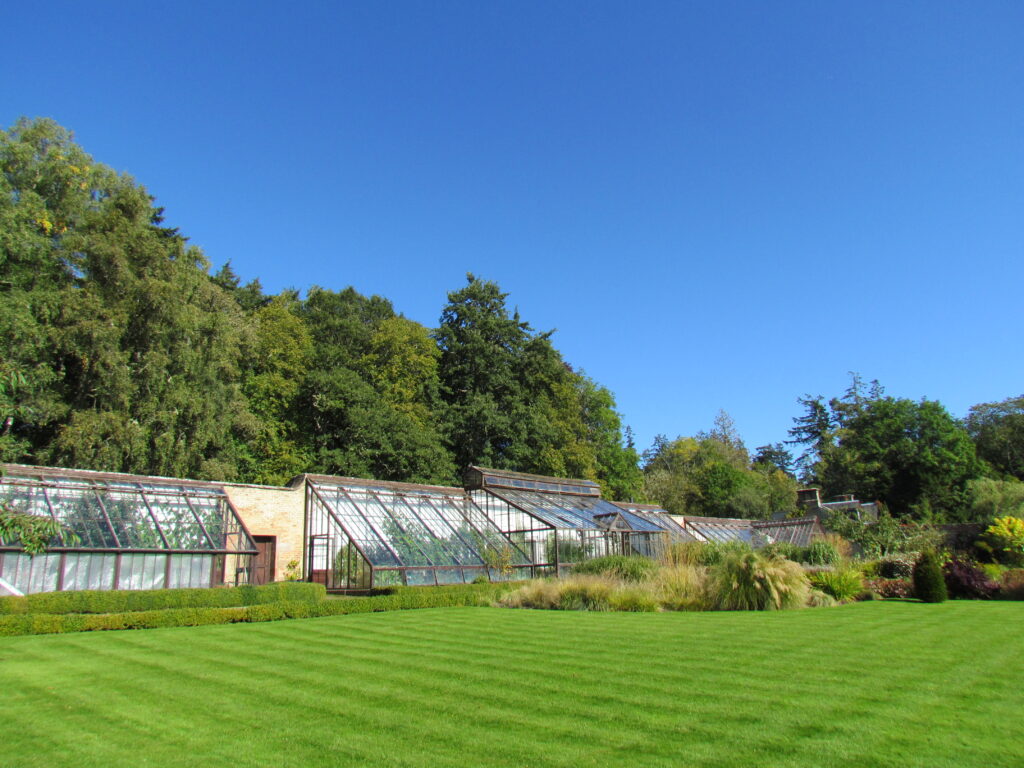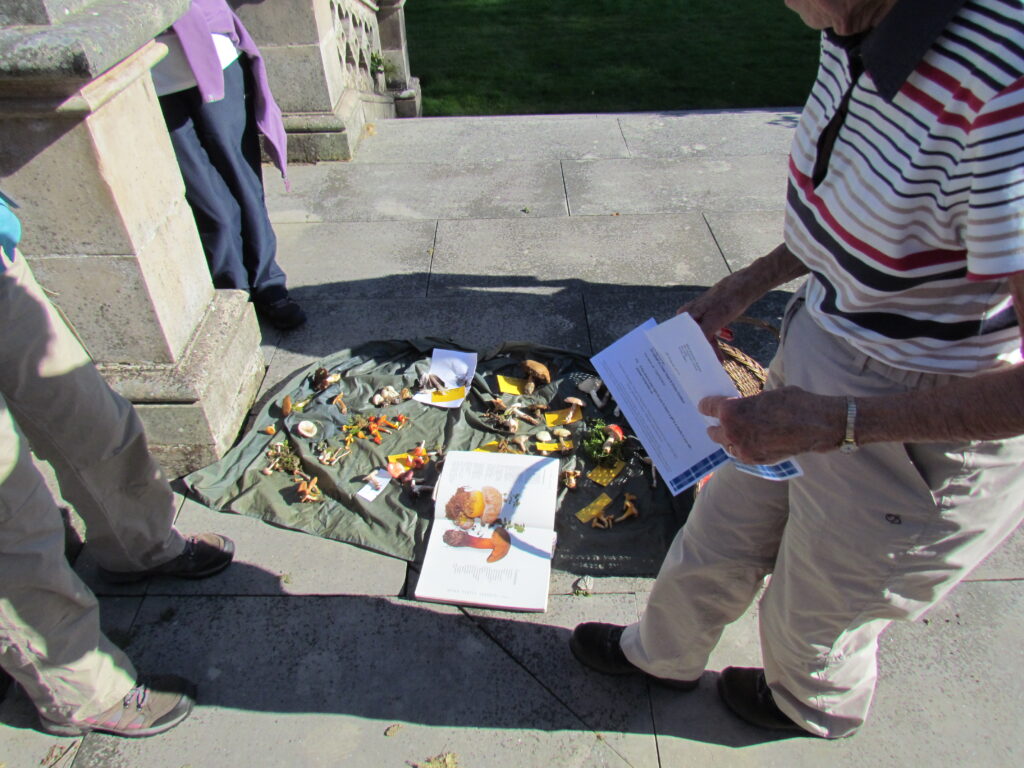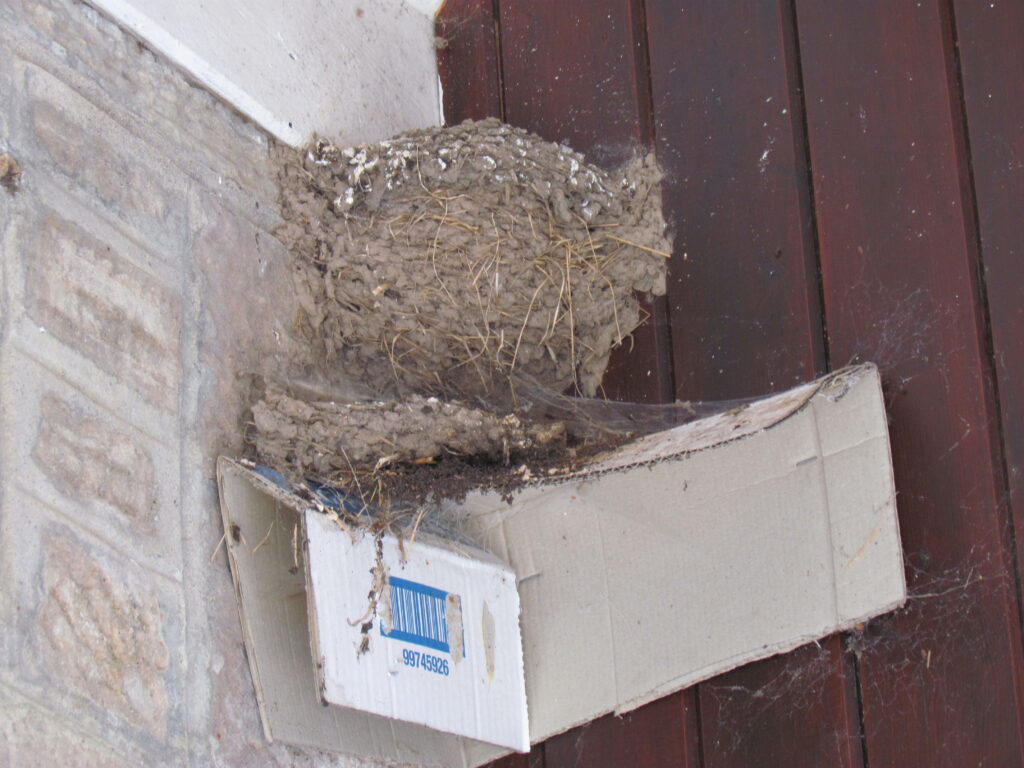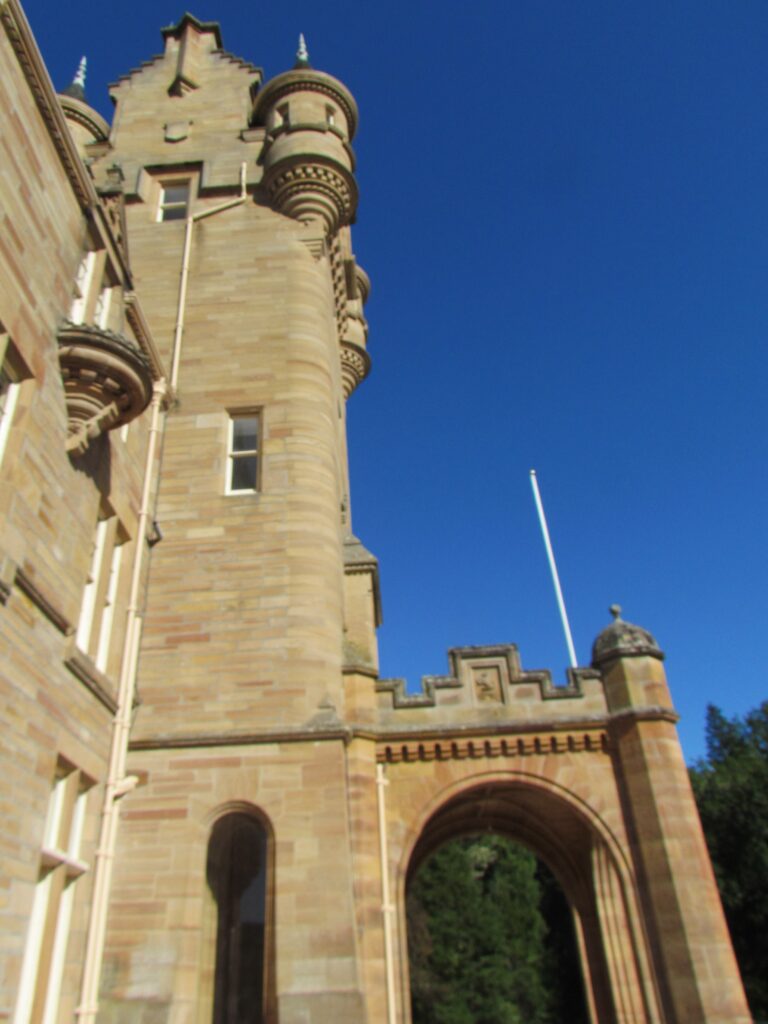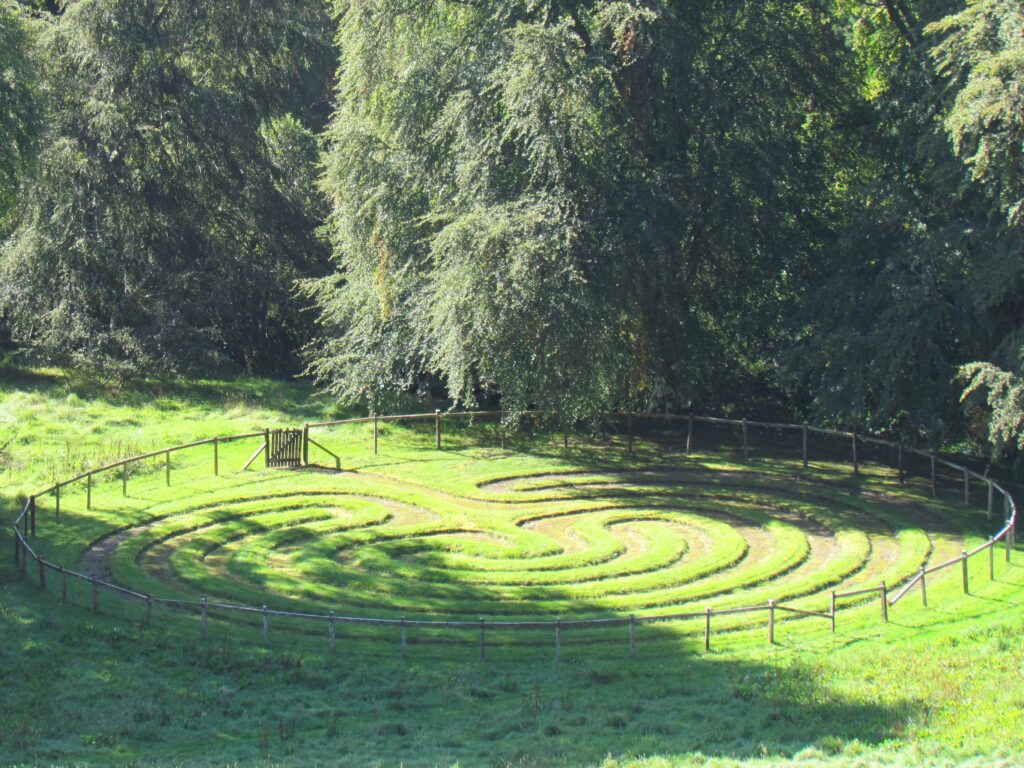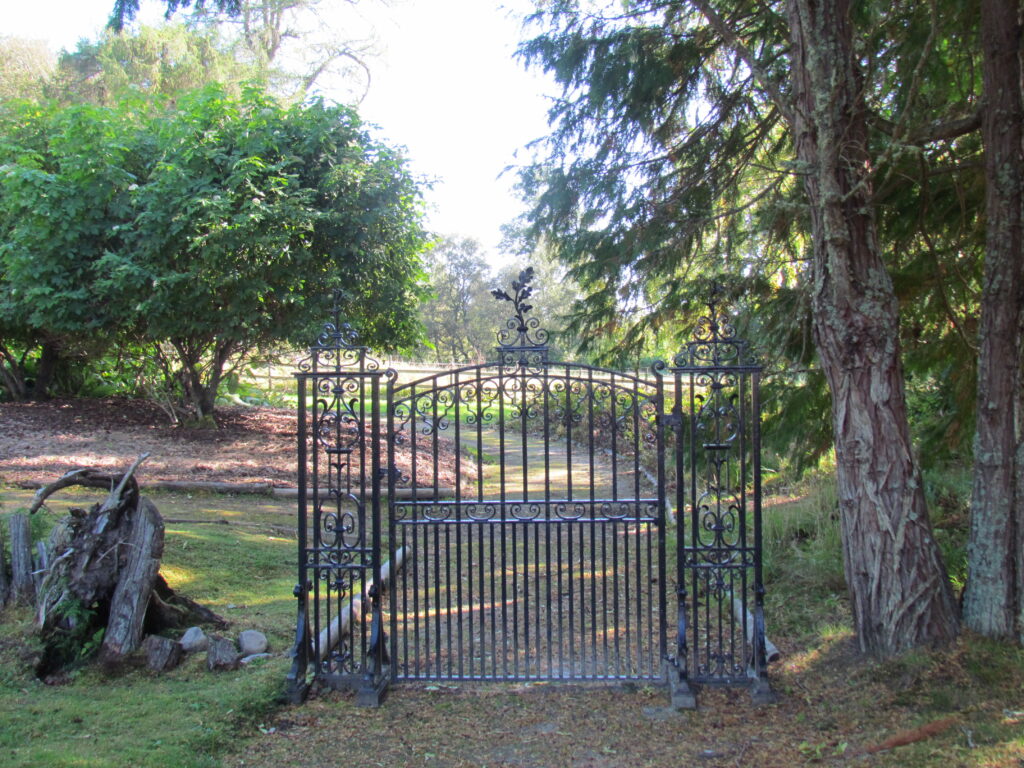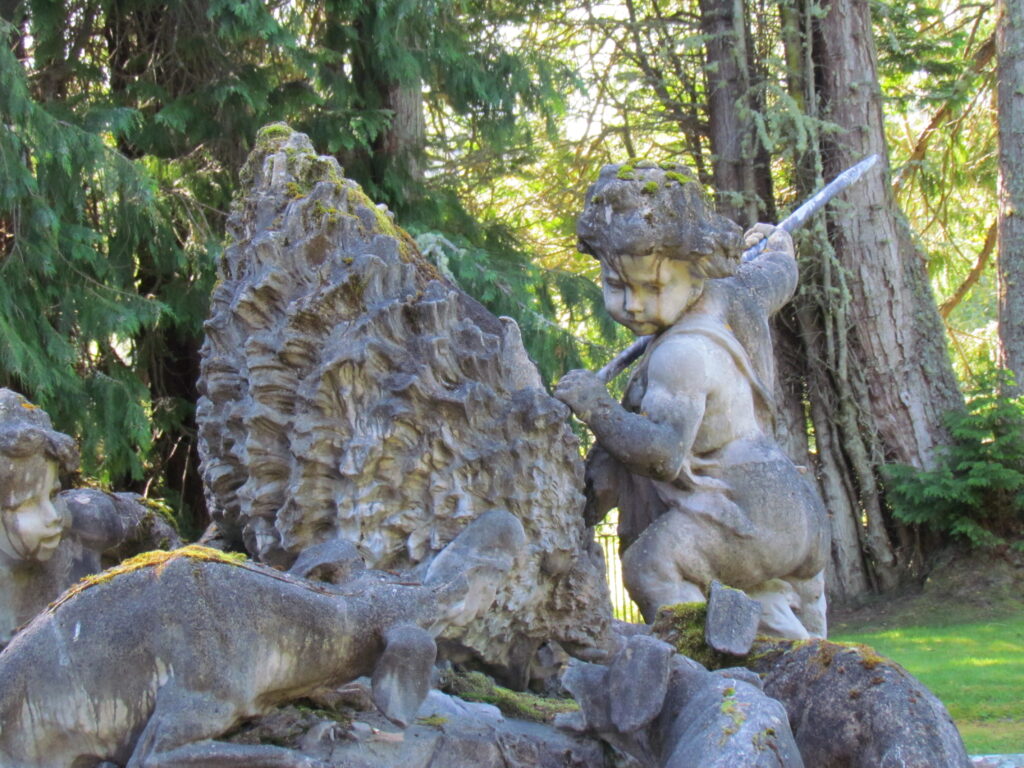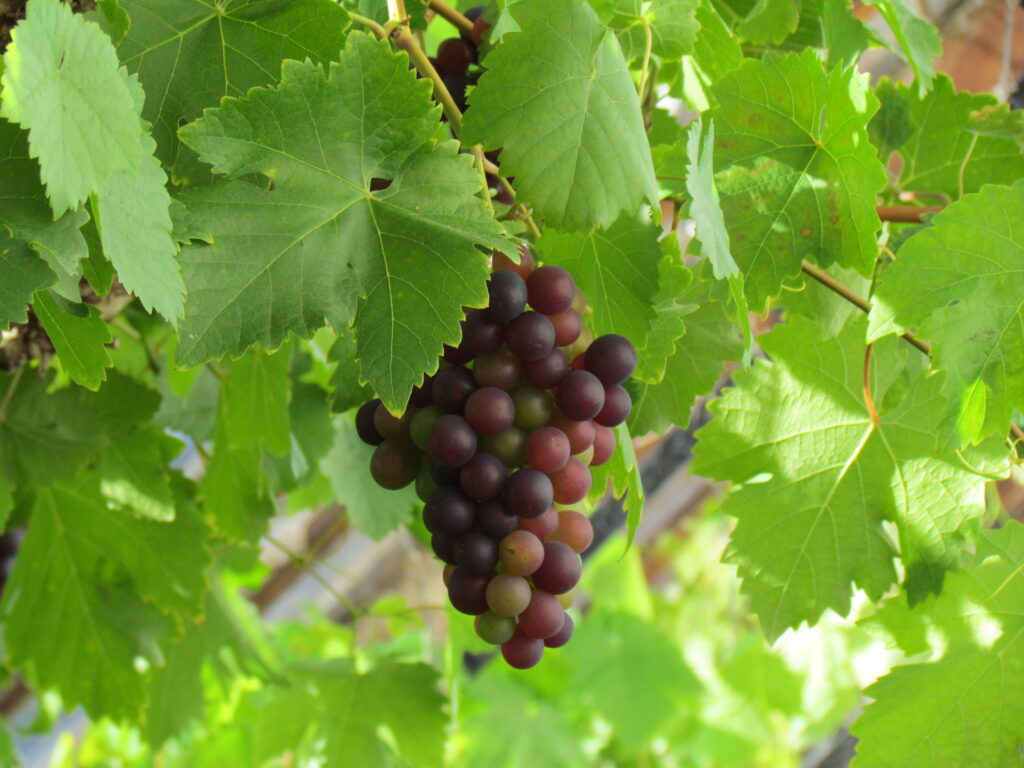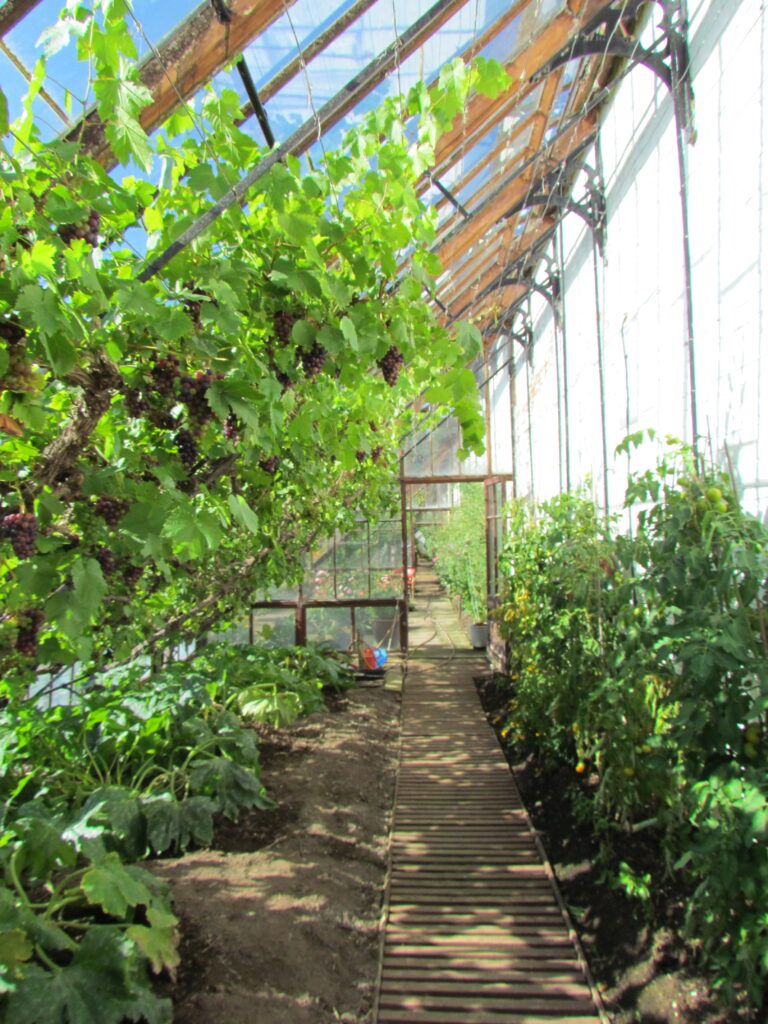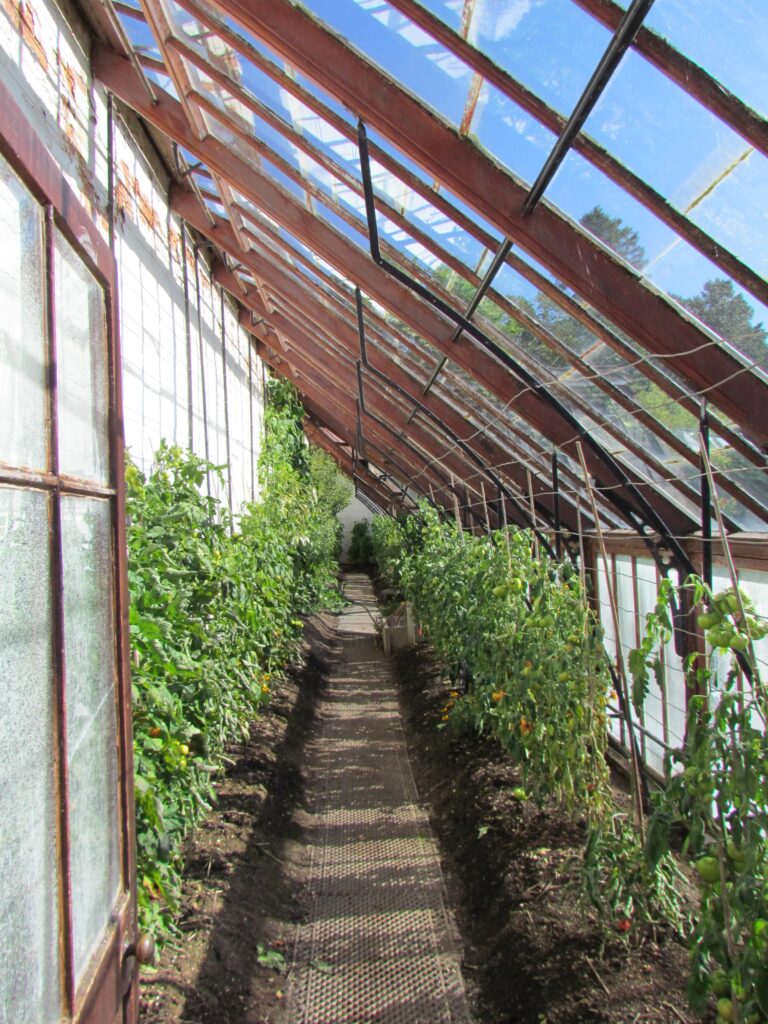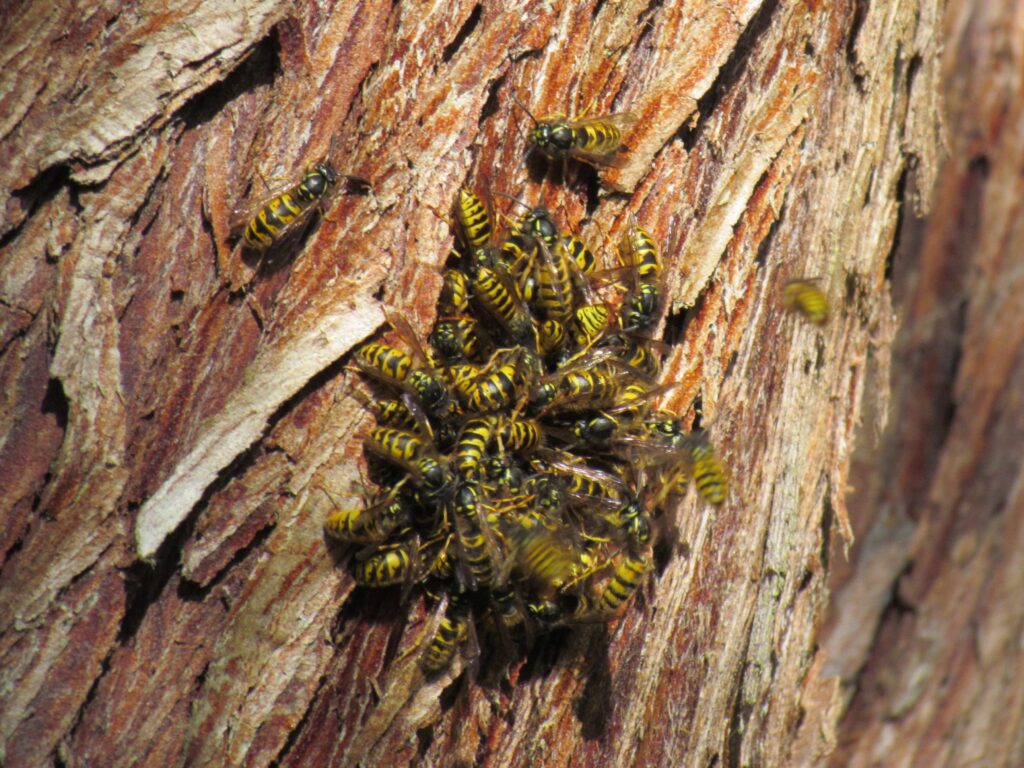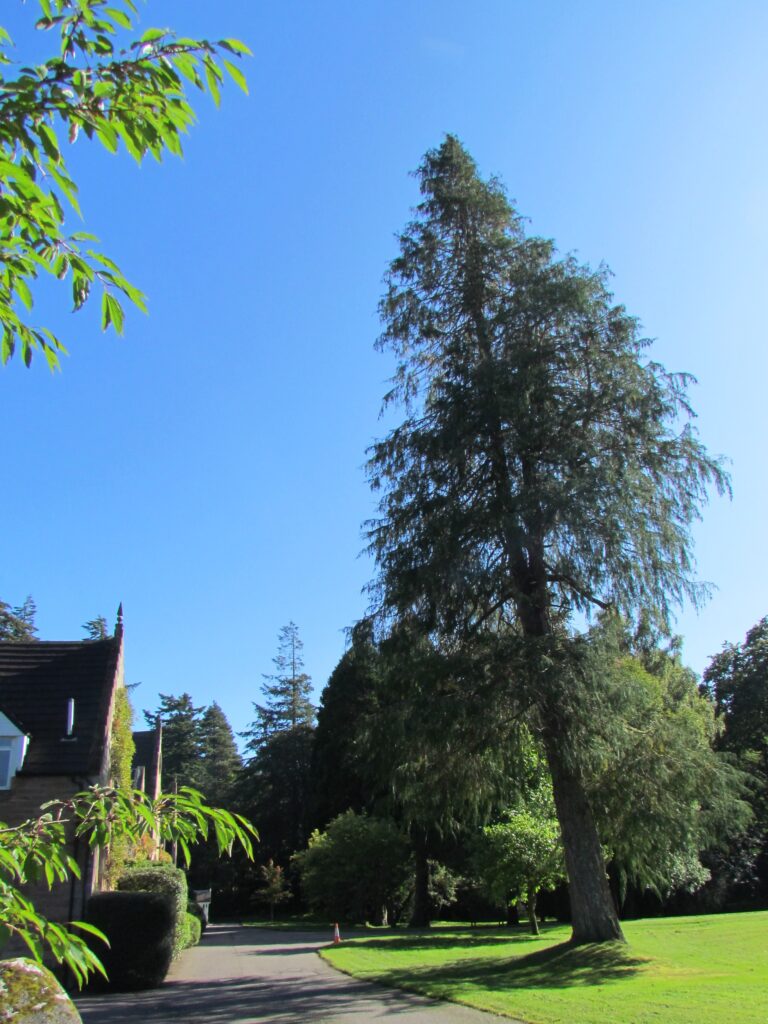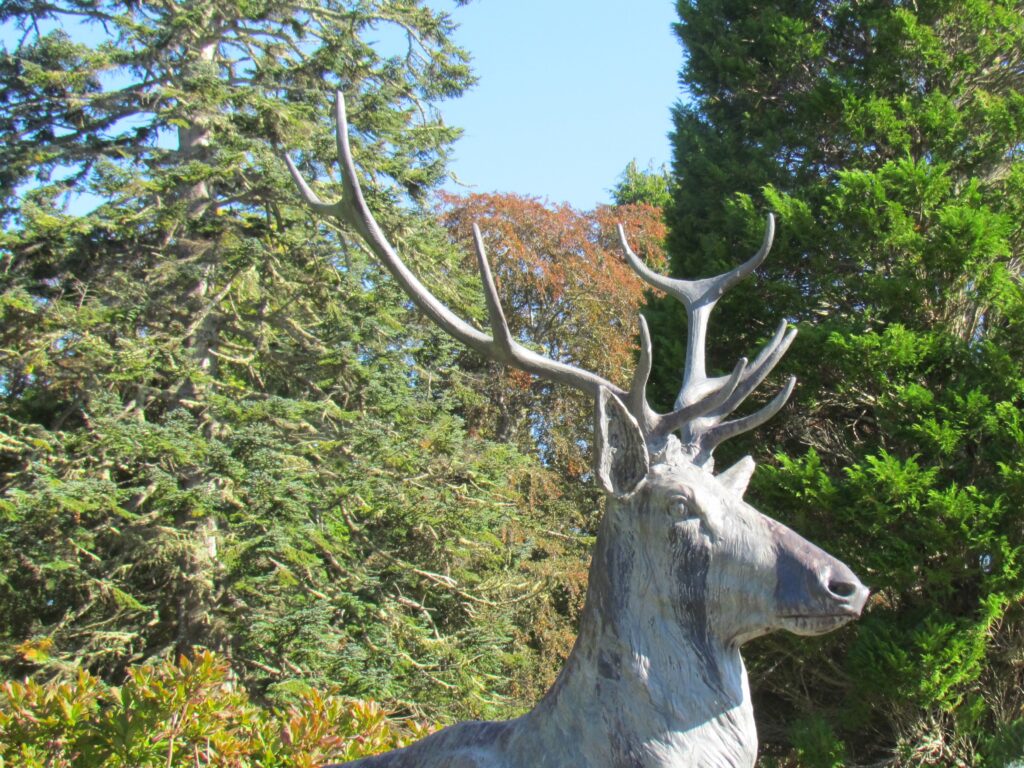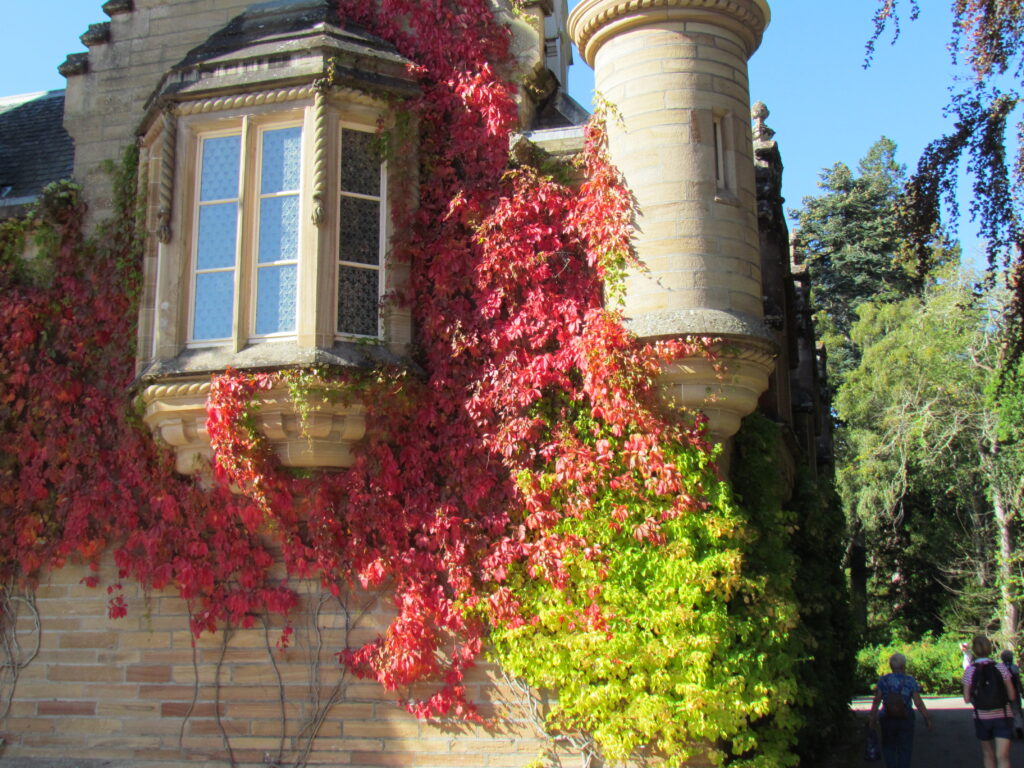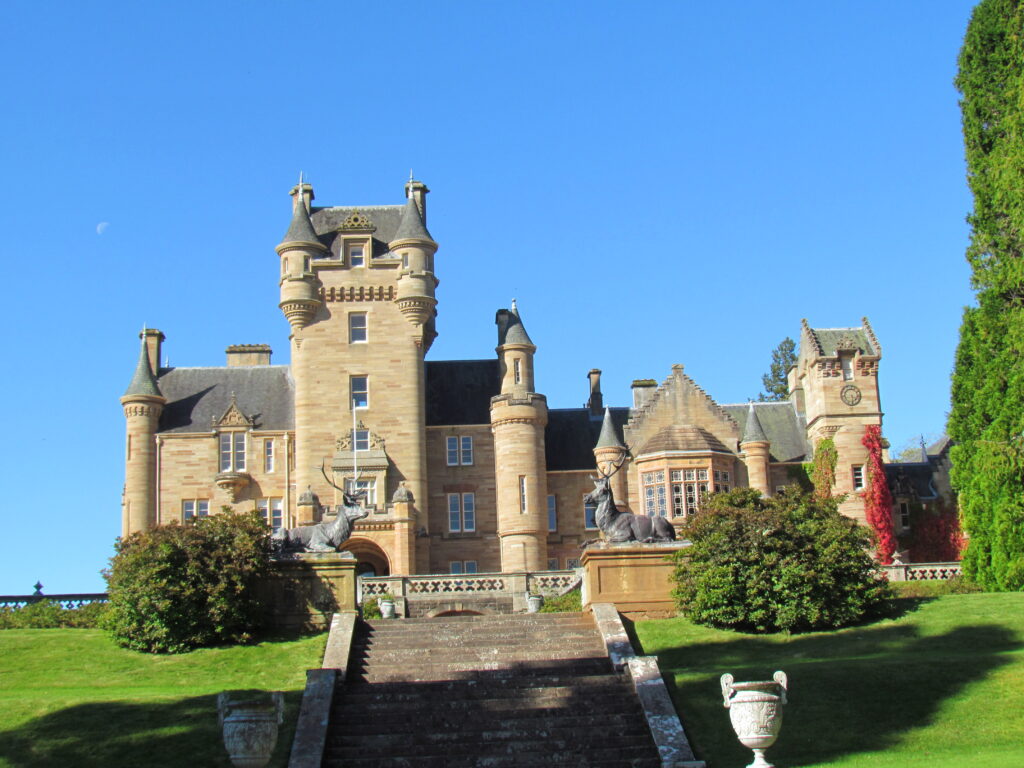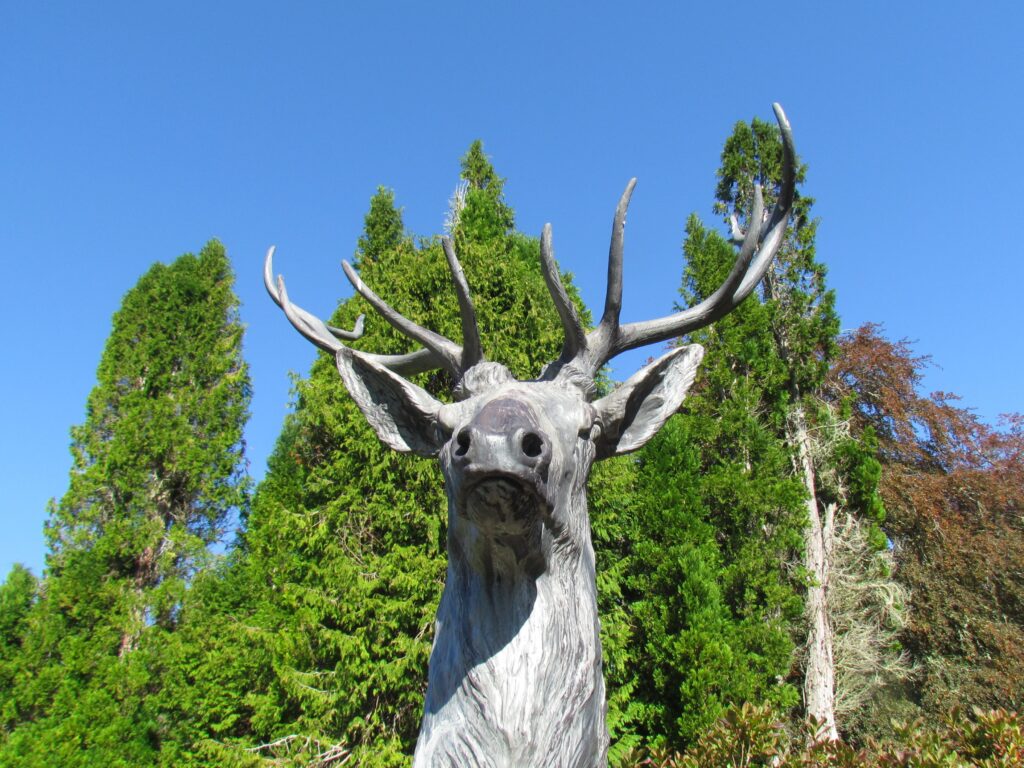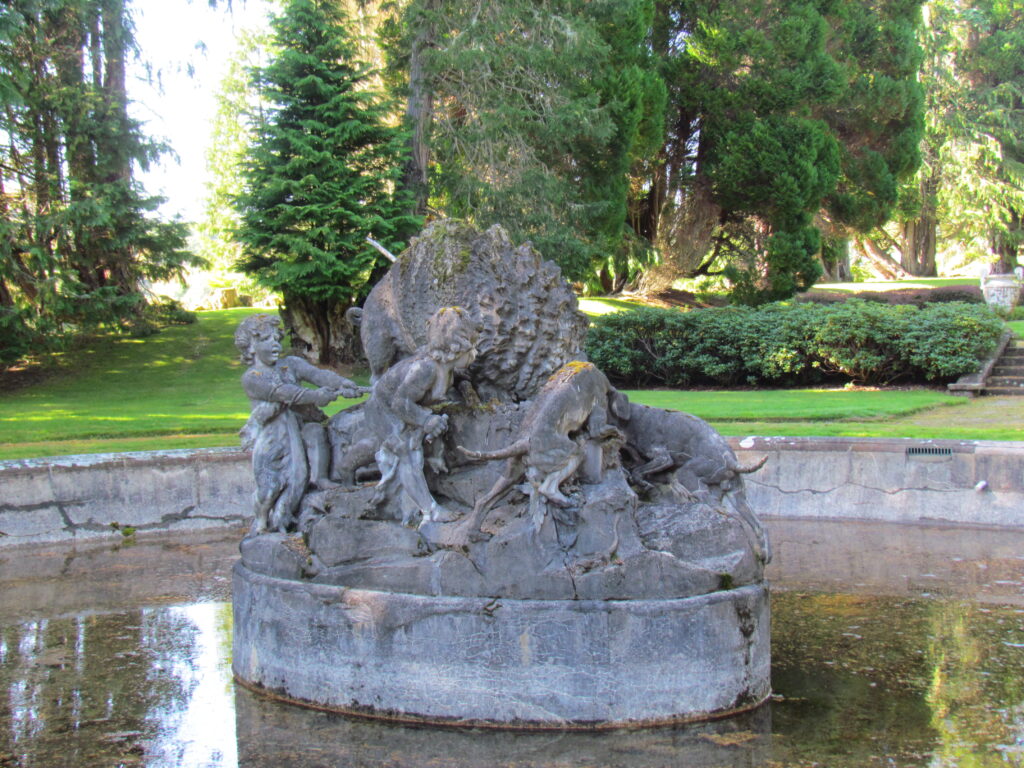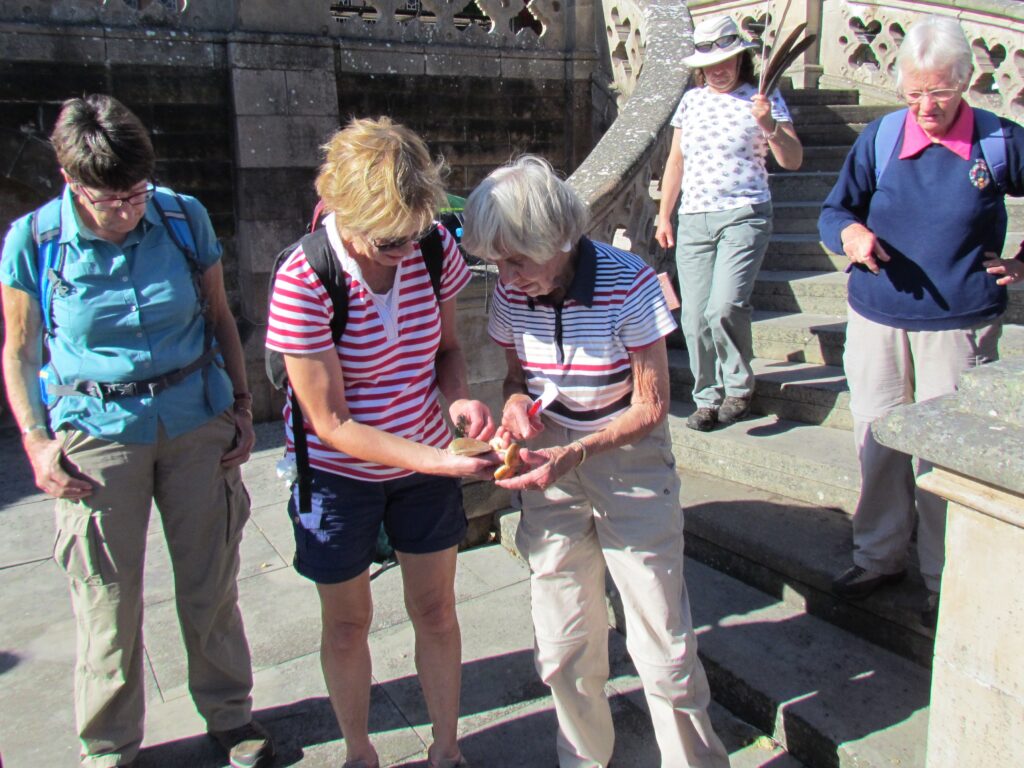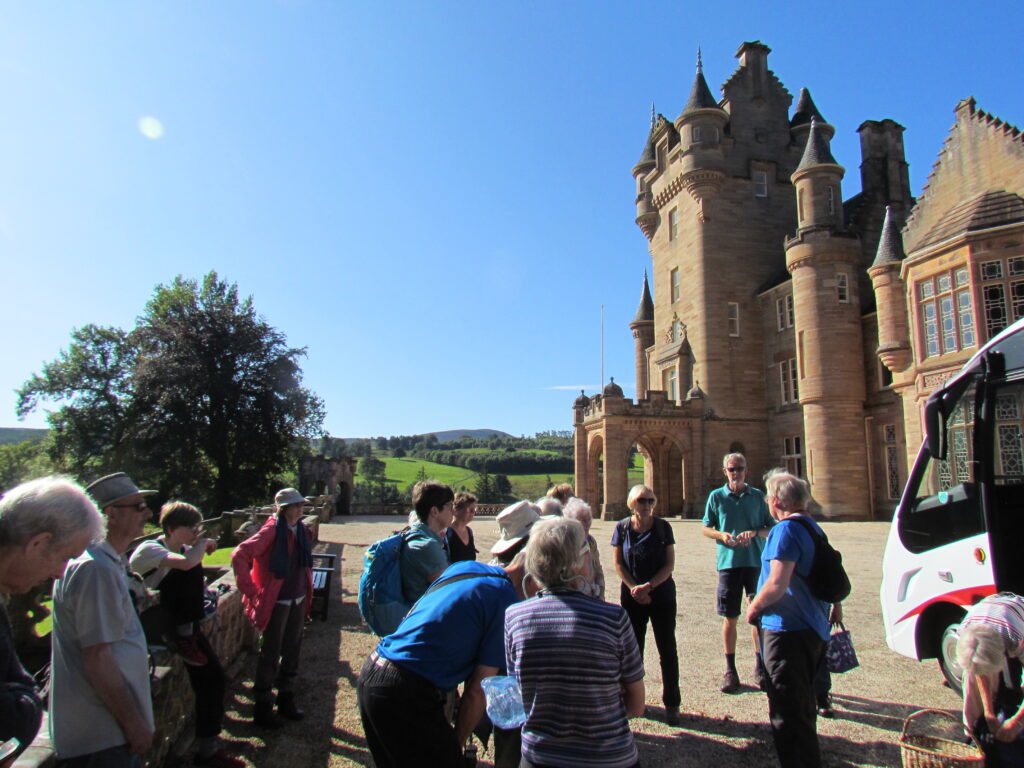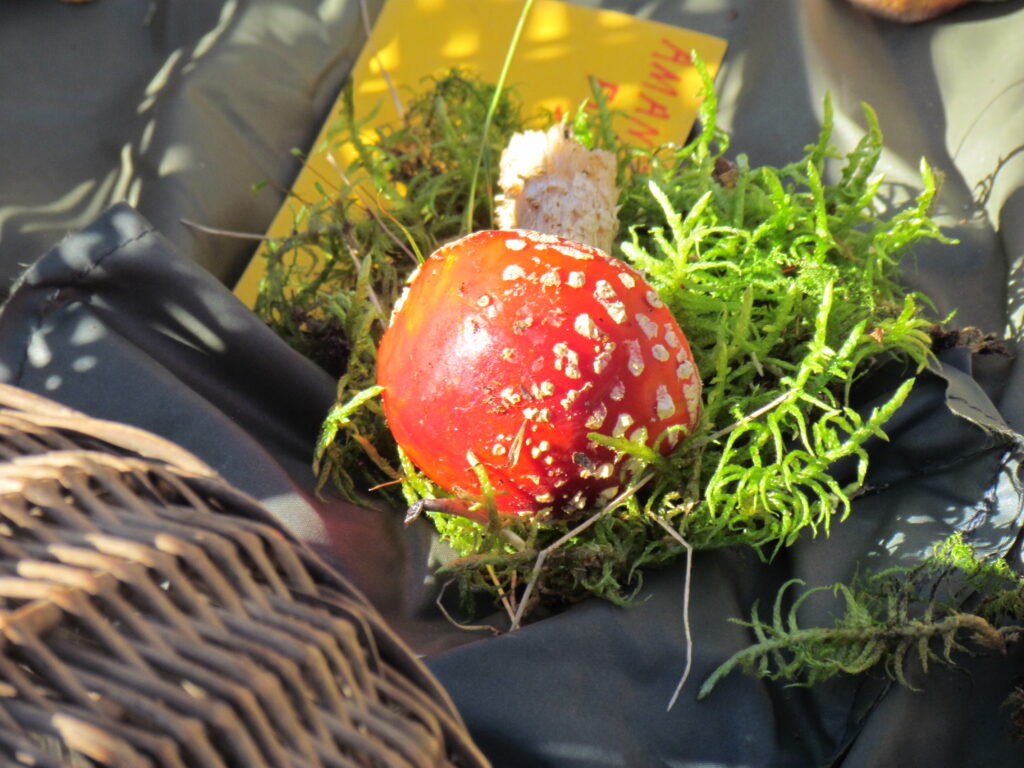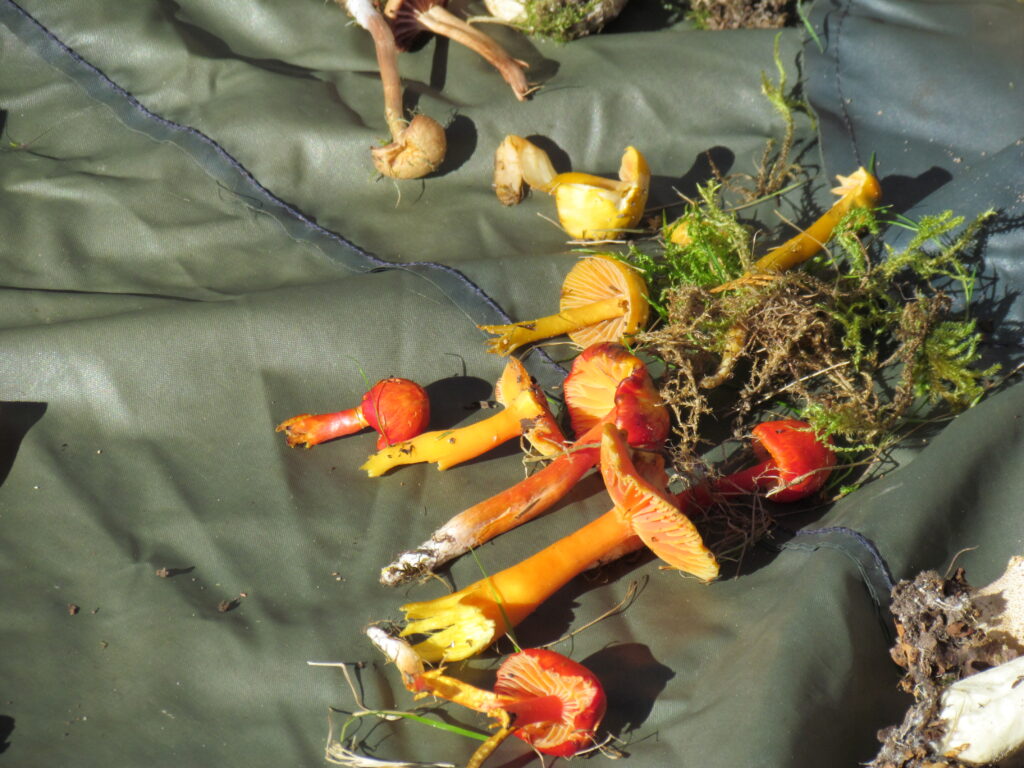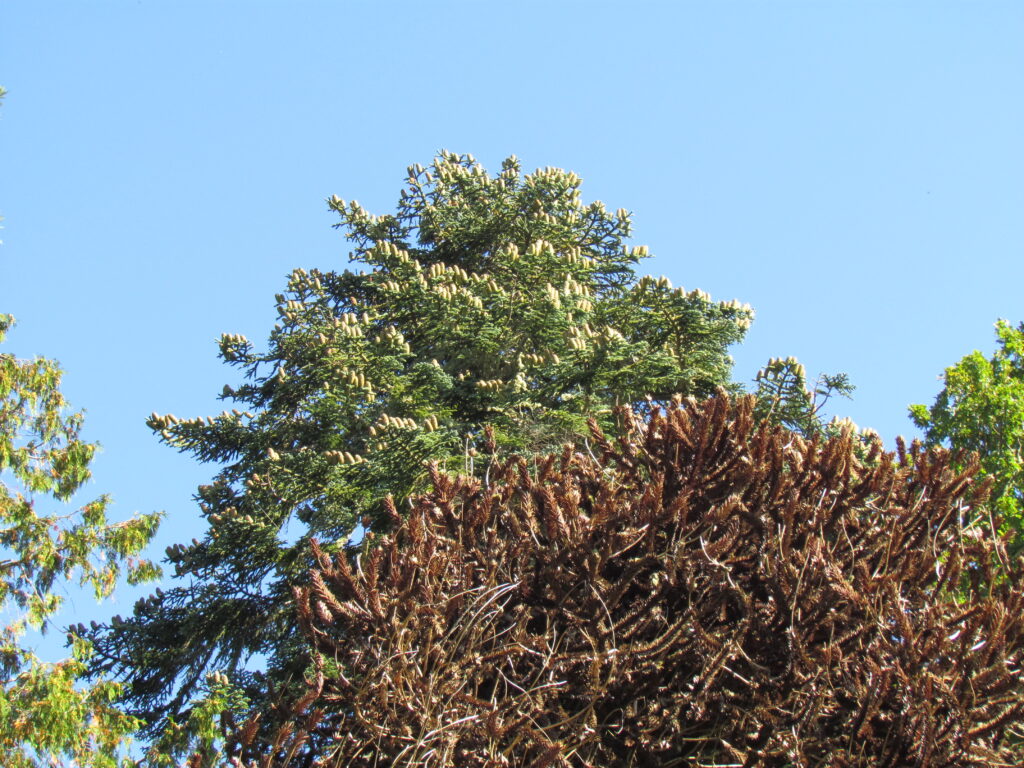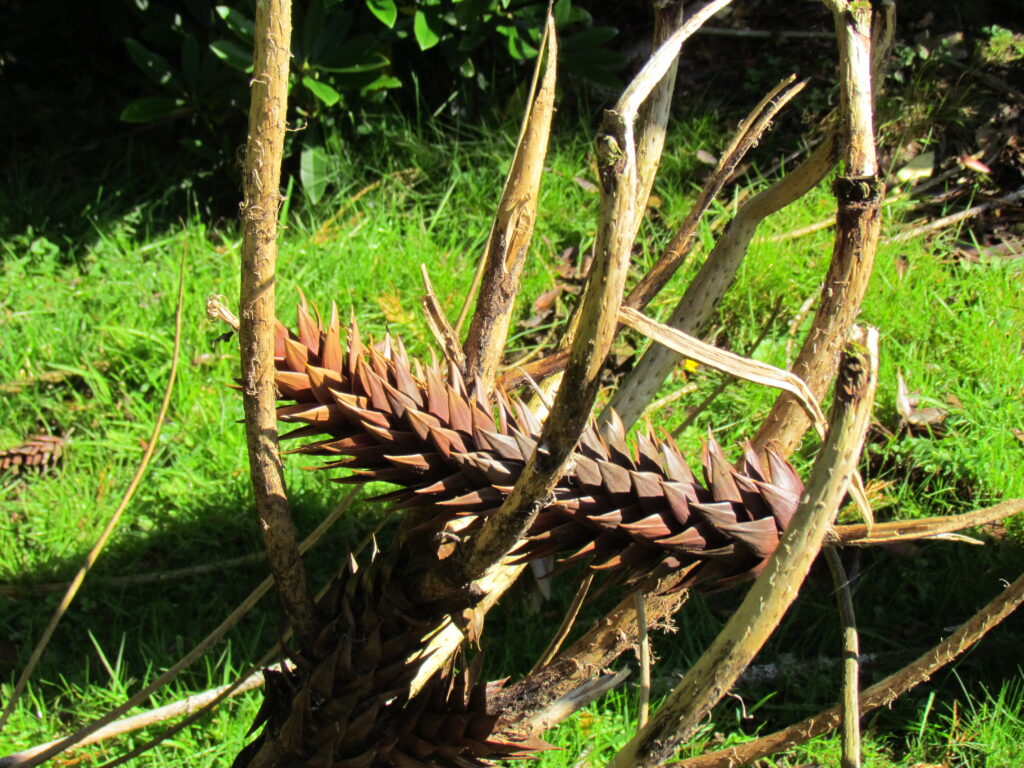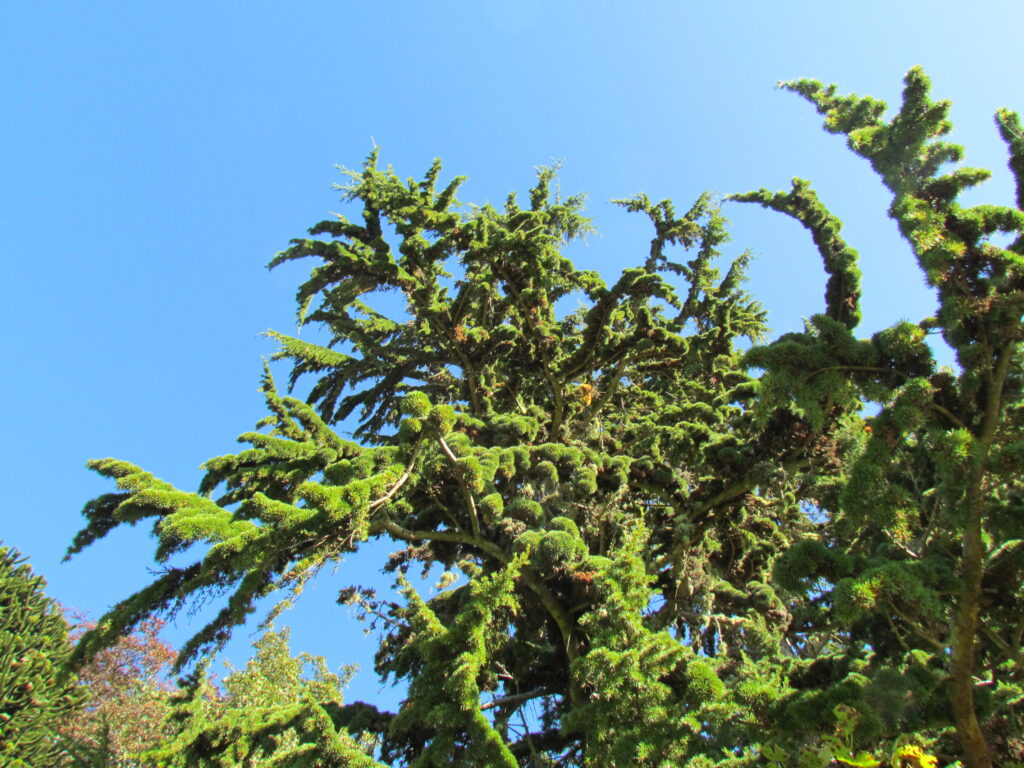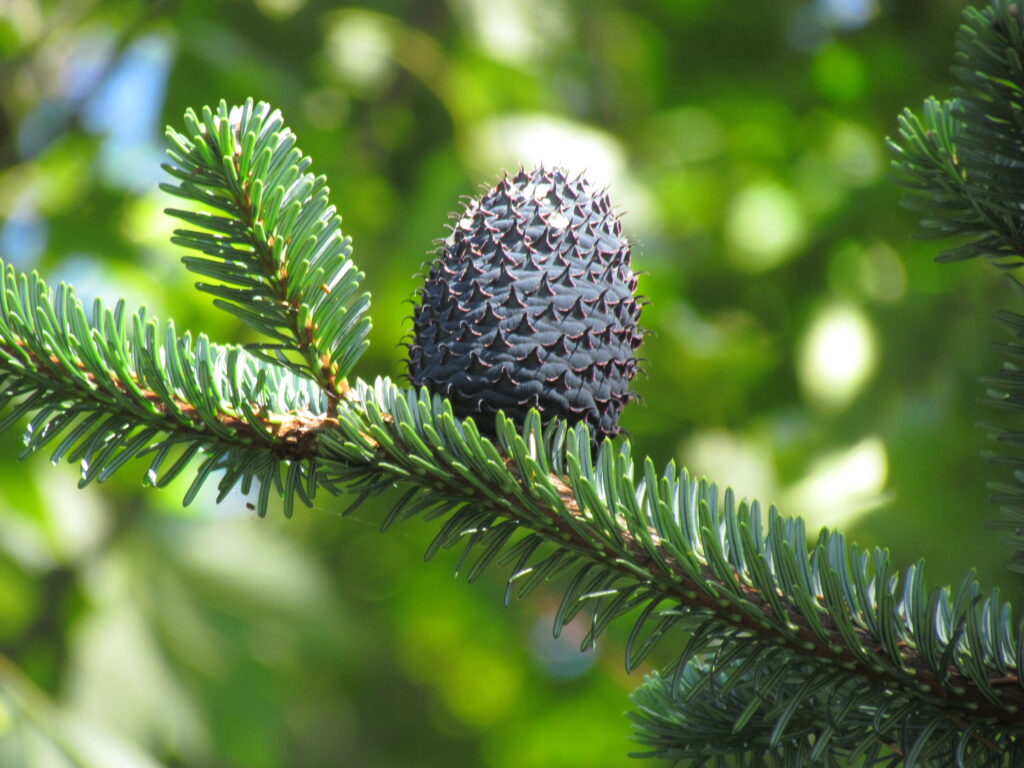Saturday proved to be one of those early autumn gloriously hot blue sky days. So much so that while strolling around the grounds, listening to John inform us about the many majestic trees surrounding the castle, the cool shade was much appreciated. Not often the case where we shed our coats up here in the far north and still swelter, or, then past the potting sheds and into the walled garden, are able to wear shorts and tee shirts. Our comfort stop at North Kessock was much appreciated. We were able to enjoy the views, stretch our legs, and refuel with a cup of tea and a doughnut before heading on.
John and Margaret met us at the gates to the castle, pointing out the pomegranates which adorn the stone posts, a symbol of the Dyson Perrin family. The castle, a beautiful warm pink shade, shone in the sunlight. Photos on the website illustrate the architecture and grounds very well and I recommend a perusal of them.
John took us down the stairs past the huge lead stags towards the circular pond with its magnificent centrepiece of cherubs, hunting dogs and a wild boar. We were amazed by the variety of trees that were collected and brought back to be planted and cared for on this estate. John has undertaken the task of labeling them all. On the way back we saw a beautiful small stone-carved bridge which led to a small stone pond. A grassed area used to be the ice rink, and from there we were entranced by the three peacocks and their single peahen foraging under the trees; even in the dappled shade we caught glimpses of their iridescent feathers. Some folk went on a fallen feather foraging hunt and came back clutching their jewels.
Further on we noticed the delightful wooden tree house and smaller “Wendy House” just opposite the stables, then on past the potting sheds and into the walled garden. It was spectacular to see all the original glass houses along the entire south facing wall; large bunches of grapes hung down where opportunistic robins flew about. The adjacent house had tomatoes and the east wall gave shelter to the vegetable garden with its lush produce. In the centre another stone pond’s walls provided a perch to relax on while we munched our packed lunches, soaking up the sun and reveling at being in such a beautiful place. I went off and roughly sketched the brown wooden door at the bottom east wall to have a memento of this day. Soon it was time to continue out the east door, down the stairs and along the side of the castle. Peering in through the window we saw the old Turkish baths and over the wall we looked at the breath-taking view of the countryside. Looking down we noticed a grass maze enclosed by railings. At the end of the pathway was a small stone rotunda, a peaceful place to sit and relax.
Kerstin then gave us an interesting and informative talk about the various fungi she had foraged from the grounds and from the Oakwood in Elgin the previous day. Laid out on her faithful old raincoat, they created a colourful display. After a visit to the stables for a comfort stop, we were ready to make our return journey via Nairn and Forres to Elgin.
Our thanks to John for his time and passing on his tree and estate knowledge, and also to Margaret for ensuring we were always safe on damp steps and paths as well as sharing her knowledge, our thanks also to Kerstin, to Sara and Gordon for organising this wonderful day out, and lastly to the Kineil bus driver.
Amanda McAlister
Trees found on this walk include Lawson Cypress, Nikko Fir, Pendent Silver LIme, Noble Fir, Giant Sequoia, Portugal Laurel, Western Red Cedar, Monkey Puzzle (one thriving and one recently died), Mountain Hemlock, Tulip Tree, and of course Scots Pine.
Kerstin brought along some recent fungi finds to supplement the day’s basket and spent some time identifying them to the group who mainly seemed concerned about the suitability of including them in an omelette.
Including Amanita Muscaria (Fly Ageric), Russula Emetica, and of course Chanterelle.
Anyone picking mushrooms, of course, is advised to research carefully before consuming!

